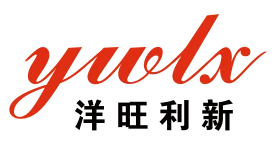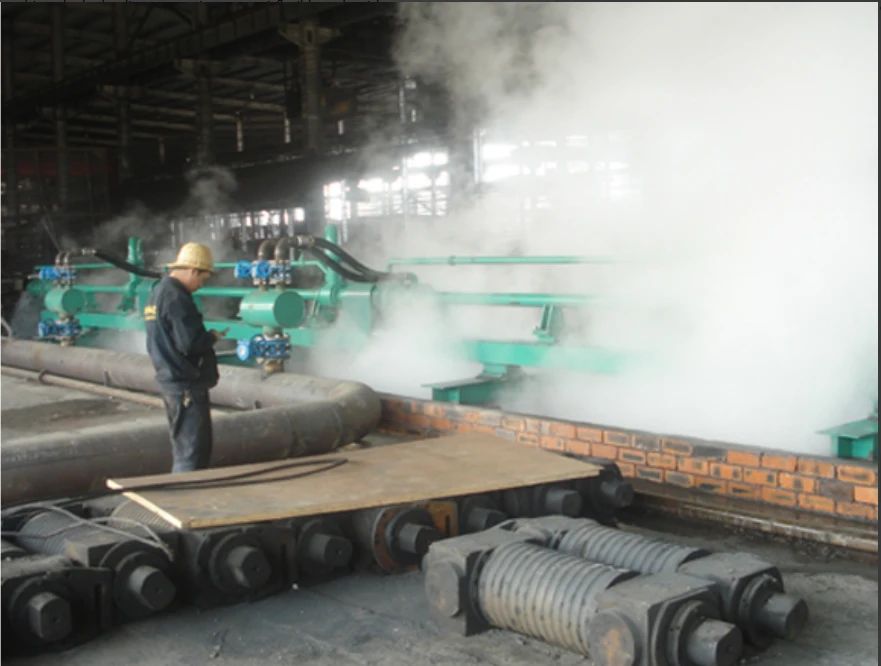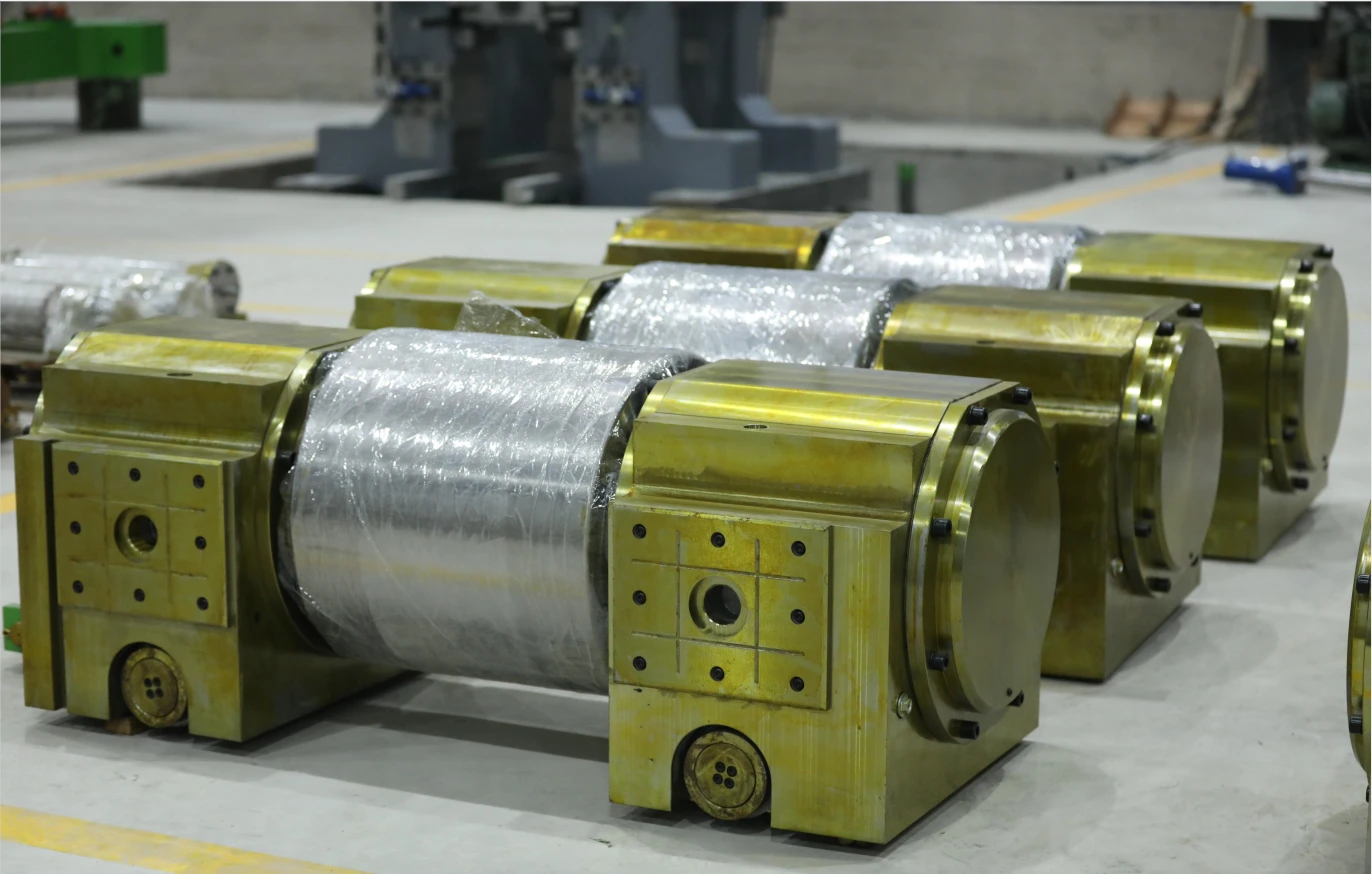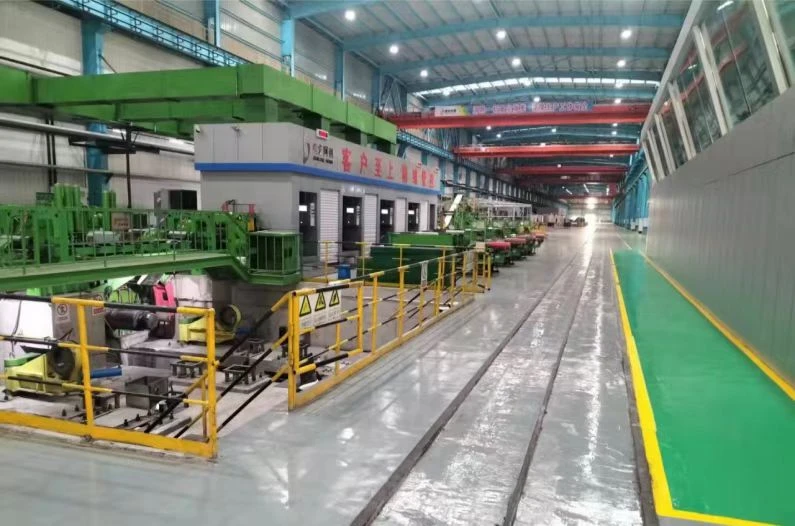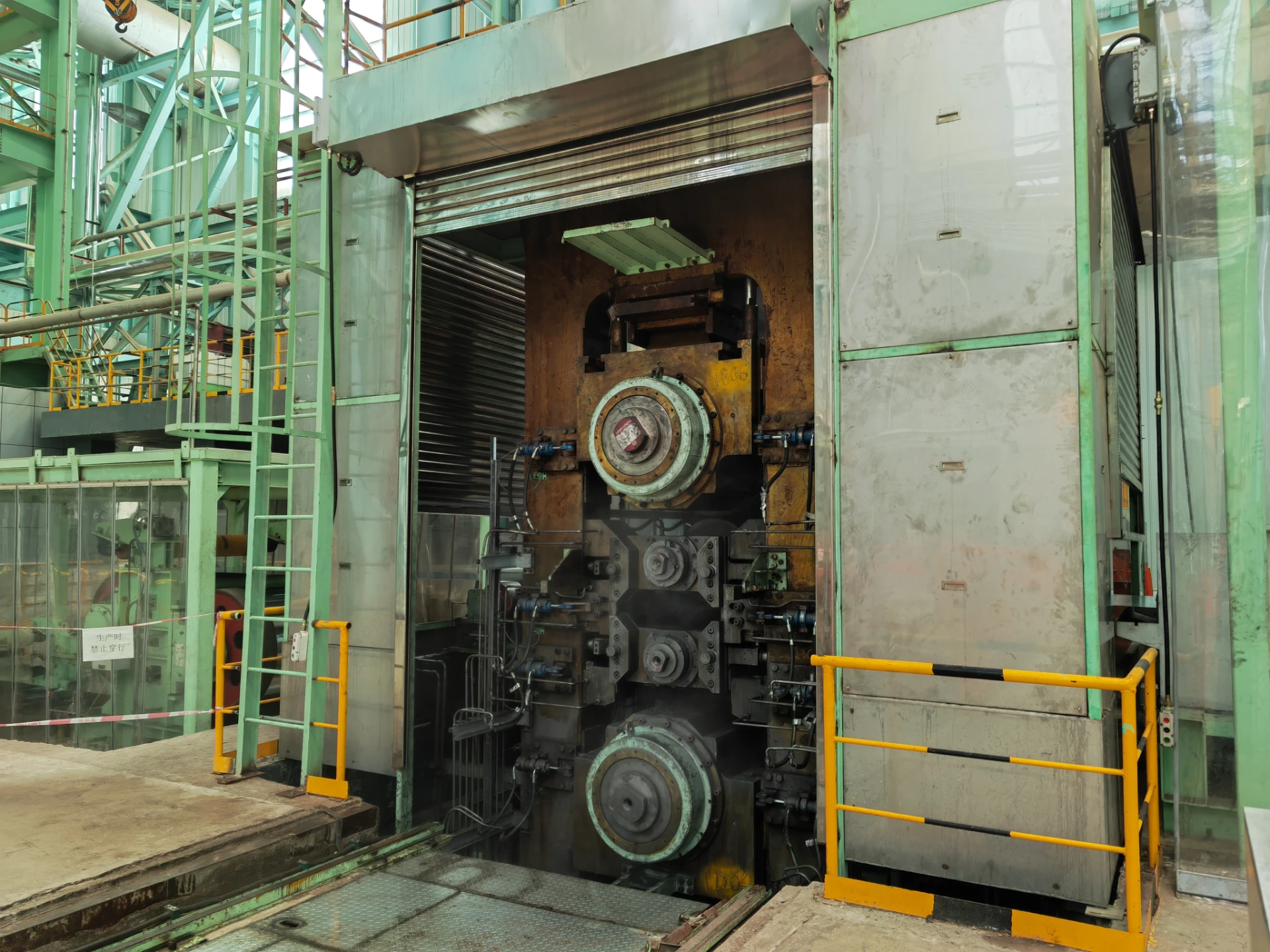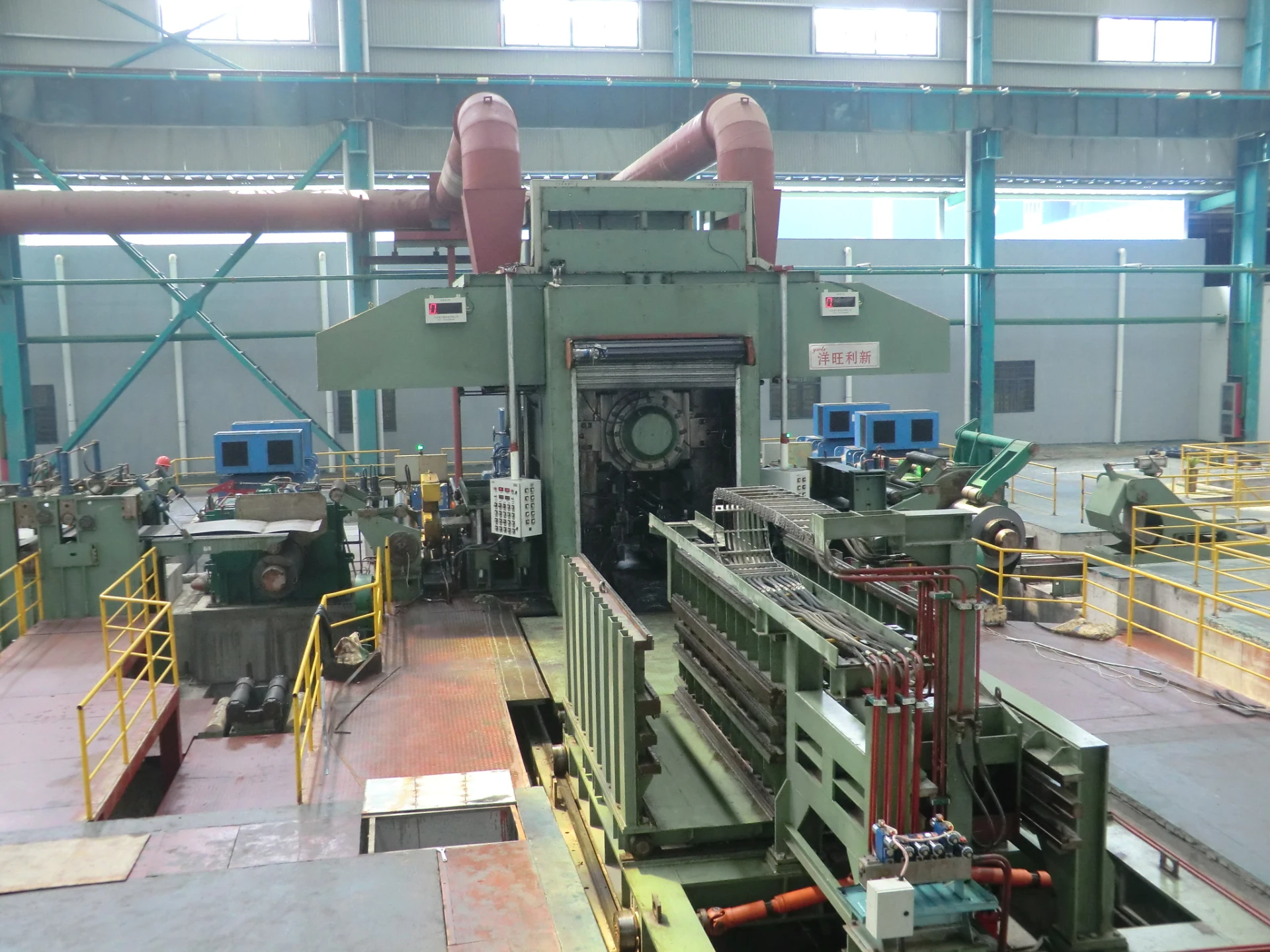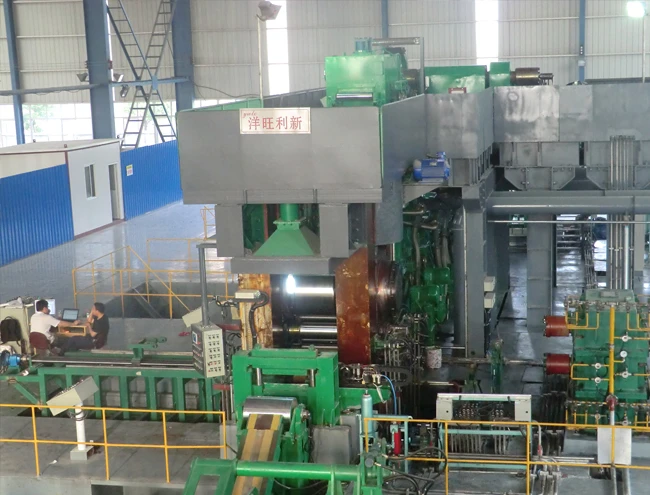
نقش AGC در حفظ ضخامت ثابت در تولید فولاد
In steel manufacturing, maintaining a consistent material thickness is essential for ensuring high-quality products that meet industry standards. Variations in thickness can lead to defects, waste, and costly rework. Automatic Gauge Control (AGC) systems play a pivotal role in achieving this precision by continuously monitoring and adjusting the gap between rollers during the rolling process. In combination with other technologies, such as automatic water pressure regulators, tension control systems, and strip tension controllers, AGC systems help maintain the necessary force and alignment, ensuring consistent thickness throughout the steel production line.
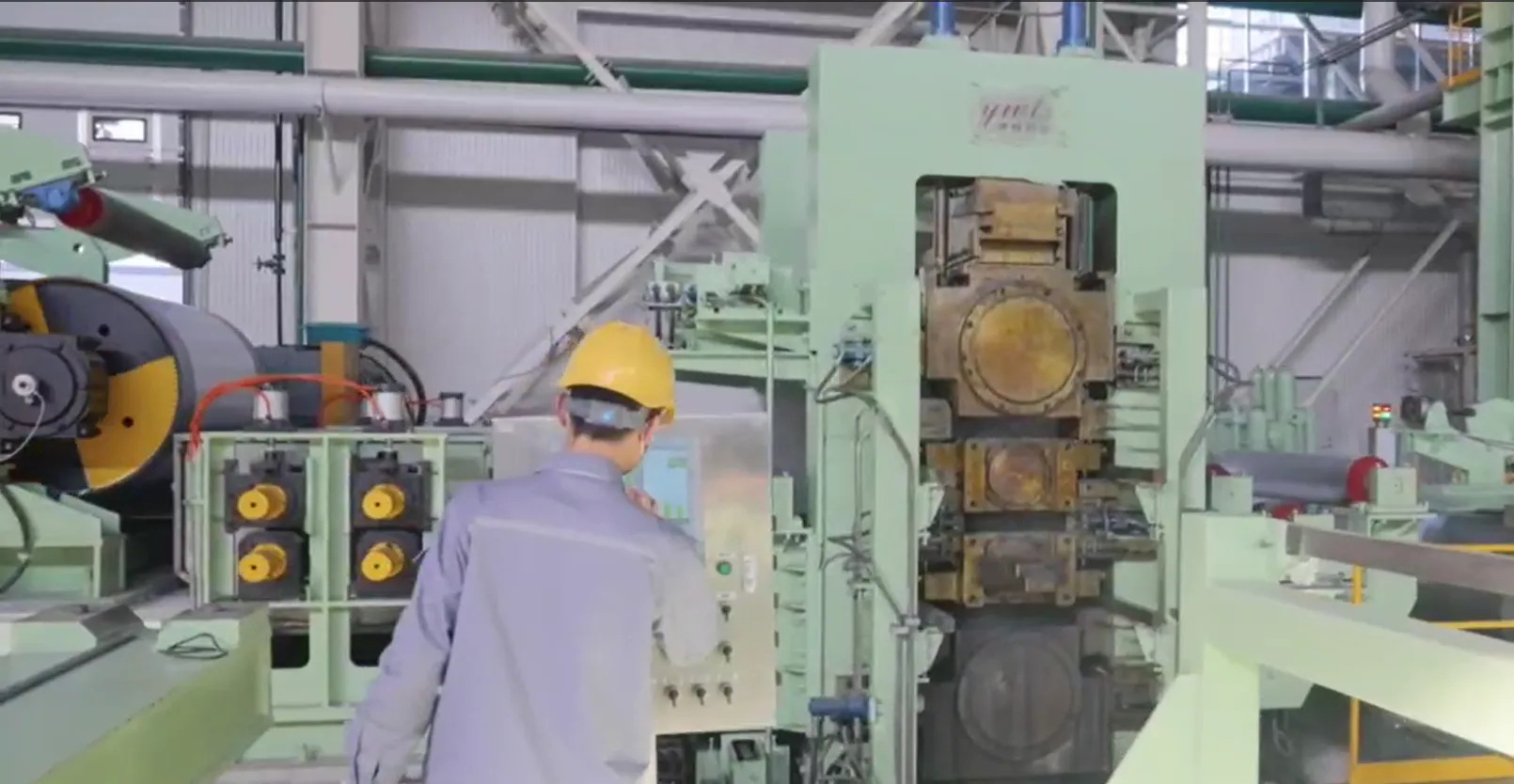
سیستم های AGC: ستون فقرات کنترل ضخامت فولاد
Automatic Gauge Control (AGC) systems are essential for steel production, as they ensure that the material thickness remains uniform despite variations in the incoming strip thickness or production parameters. During the rolling process, steel strips are passed between two or more rollers, which compress the material to reduce its thickness. AGC systems automatically adjust the gap between the rollers based on real-time measurements of the strip thickness. This automatic adjustment helps to maintain a consistent thickness across the full width and length of the strip, a critical factor in producing high-quality steel products.
The AGC system works by integrating sensors that monitor the material thickness and feedback loops that adjust the position of the rollers. These adjustments are made with precision, using hydraulic actuators and other control systems to apply the necessary force. The ability of AGC to react in real-time ensures minimal deviation from the desired thickness, which improves overall production efficiency and reduces material waste.
The Role of Hydraulic Automatic Gauge Control in Steel Production
Hydraulic Automatic Gauge Control (HAGC) is a crucial aspect of AGC systems, specifically designed to provide the force necessary to adjust the gap between rollers. In steel manufacturing, the rolling process requires significant force to compress the steel strip to the desired thickness. Hydraulic actuators in HAGC systems use hydraulic pressure to apply this force, allowing for fine adjustments to the roller gap. By adjusting the hydraulic pressure, HAGC ensures that the rollers remain in the correct position throughout the process, maintaining uniformity in the thickness of the strip.
The HAGC system also integrates sensors that measure strip thickness and provide feedback to the control system. As the strip moves through the mill, any variations in thickness are detected, and the hydraulic automatic gauge control responds by adjusting the roller gap. This precise control allows manufacturers to maintain the desired strip thickness even as the material passes through different stages of the production process, such as cooling or stretching.
با خودکار کردن این تنظیمات، HAGC راندمان کلی تولید فولاد را بهبود می بخشد، کار دستی را کاهش می دهد و خطر خطاهای ناشی از تنظیمات شکاف غلتکی را به حداقل می رساند. نتیجه یک محصول فولادی است که به طور مداوم با مشخصات مطابقت دارد، کیفیت را تضمین می کند و نیاز به تنظیمات پس از تولید را کاهش می دهد.
کنترل کشش: تضمین پایداری در فرآیند نورد
In addition to maintaining a consistent gauge, tension control is another critical factor in achieving uniform strip thickness during the rolling process. سیستم های کنترل کشش regulate the force applied to the steel strip as it moves through the rollers, ensuring that the material remains stable and properly aligned throughout the process. This is especially important in processes like cold rolling or coil processing, where excessive tension can cause stretching, warping, or uneven thickness.
Tension control works by adjusting the force applied to the steel strip at various points along the production line. Sensors monitor the tension, and if the strip becomes too tight or loose, the system will automatically adjust the tension to maintain consistent pressure. By controlling the tension, these systems prevent fluctuations in material properties that could lead to uneven rolling and variations in thickness. This allows manufacturers to maintain high levels of consistency and quality in their steel products.
کنترل کننده های کشش نواری: کلید نورد دقیق
A more specialized form of tension control in steel manufacturing is the strip tension controller. These systems are particularly important in hot rolling mills and cold rolling mills, where the steel strip is subjected to various forces as it moves through the rollers. The strip tension controller manages the tension of the strip by adjusting the pressure and speed of the rollers, which ensures that the material remains in the correct position and is processed evenly.
The strip tension controller integrates with the AGC system to adjust the gap between rollers as needed while simultaneously regulating the tension in the strip. This dual-control mechanism enables precise control over the entire rolling process, ensuring that both the thickness and shape of the steel strip are consistent from start to finish. By coordinating the strip tension with the roller gap, strip tension controllers optimize the rolling process, reducing defects and improving material yield.
Strip tension controllers use advanced sensors to continuously monitor the tension in real time, adjusting as necessary to compensate for changes in material properties or rolling speed. This constant monitoring and adjustment ensure that the steel strip is always under the ideal amount of tension, preventing over-elongation or buckling during production.
سیستم های کنترل یکپارچه: به حداکثر رساندن کارایی و دقت
The integration of AGC systems, automatic water pressure regulators, tension control systems, and strip tension controllers results in a highly sophisticated production environment that maximizes both efficiency and precision. These technologies work in tandem, with AGC systems focusing on maintaining consistent strip thickness, tension control systems ensuring stability and alignment, and strip tension controllers optimizing the material's movement during the rolling process.
همانطور که نوار فولادی در آسیاب پیشرفت می کند، سیستم های یکپارچه به طور مداوم شکاف غلتکی، کشش و سایر پارامترها را برای حفظ شرایط بهینه تنظیم می کنند. این کنترل بلادرنگ به تولیدکنندگان اجازه می دهد تا محصولات فولادی را با حداقل ضایعات، ضخامت ثابت و کیفیت برتر تولید کنند. با خودکار کردن این تنظیمات، سازندگان می توانند به طور قابل توجهی مداخله انسانی را کاهش دهند، توان عملیاتی را افزایش دهند و هزینه های مرتبط با دوباره کاری و از دست دادن مواد را کاهش دهند.
علاوه بر این، ادغام این فناوریها امکان جمعآوری و نظارت بهتر دادهها را فراهم میکند و ردیابی عملکرد و شناسایی زمینههای بهبود را آسانتر میکند. با وجود سیستمهای کنترل پیشرفته، تولیدکنندگان فولاد میتوانند به ثبات، کیفیت و کارایی بیشتری در طول فرآیند تولید دست یابند.
In conclusion, Automatic Gauge Control (AGC) systems play a crucial role in maintaining consistent material thickness in steel production. By integrating key components like hydraulic automatic gauge control, tension control, and strip tension controllers, manufacturers can ensure that the rolling process is both precise and efficient. These systems reduce the potential for errors, improve product quality, and optimize the overall production process.
با ادامه پیشرفت تولید فولاد، ادغام سیستم های AGC با سایر فناوری های پیشرفته اهمیت بیشتری پیدا می کند. با استفاده از این سیستمهای پیشرفته، تولیدکنندگان فولاد میتوانند قوام محصول خود را بهبود بخشند، ضایعات را کاهش دهند و در بازار جهانی که به طور فزایندهای نیاز به رقابت دارند، رقابتی باقی بمانند.
-
Indian Clients Visit YWLX to Inspect Skin-pass MillاخبارJun.22,2025
-
Typical Products from Reversing Cold Rolling ProcessاخبارMay.26,2025
-
Surface Finish Improvement through Skin Pass RollingاخبارMay.26,2025
-
Integration of AGC Systems in Modern Cold Rolling MillsاخبارMay.26,2025
-
Cold Rolling in the Context of High-Strength Steel DemandاخبارMay.26,2025
-
AGC in Hot Rolling Mills: Challenges and SolutionsاخبارMay.26,2025
-
Why Reversing Cold Rolling Mills Are Ideal for Specialty MetalsاخبارMay.13,2025


